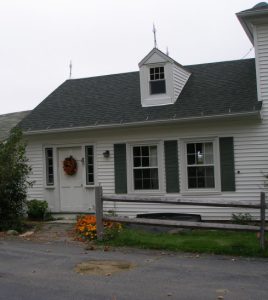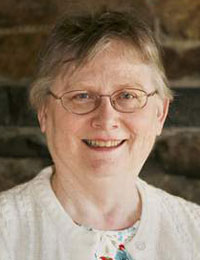 I’ve been a bridesmaid in four weddings. In each of these weddings, the bride has carefully chosen four special items to wear on her wedding day: something old, something new, something borrowed, and something blue. And when preparing for the first three weddings, I didn’t think much of the custom. But when my sister-in-law got married in April, and showed me her something old, new, borrowed, and blue, I couldn’t help but think: why on earth are women doing this? ‘Something old, new, borrowed, blue’? Did my mother do it? My grandmother? My great-grandmother? Continue reading ‘Something old, something new’
I’ve been a bridesmaid in four weddings. In each of these weddings, the bride has carefully chosen four special items to wear on her wedding day: something old, something new, something borrowed, and something blue. And when preparing for the first three weddings, I didn’t think much of the custom. But when my sister-in-law got married in April, and showed me her something old, new, borrowed, and blue, I couldn’t help but think: why on earth are women doing this? ‘Something old, new, borrowed, blue’? Did my mother do it? My grandmother? My great-grandmother? Continue reading ‘Something old, something new’
Monthly Archives: June 2016
The Parkman House

Among the many treasures in the Society’s collection is an extraordinarily well-preserved circa 1847 oil painting by Philip Harry of a grand Boston home that no longer exists: the late eighteenth-century Samuel Parkman House on Bowdoin Square in the West End.
Founded in 1788, Bowdoin Square had, by the early nineteenth century, become one of the most prestigious residential areas of the city and home to many of Boston’s leading families, including the Parkmans. (Samuel Parkman, who built the house around 1789, was a successful merchant who made a fortune in real estate as Boston grew into one of the most important cities in the new republic.) Continue reading The Parkman House
Serendipity
 Many discoveries in life are the result of serendipity – wandering around until one falls over something one wasn’t looking for.
Many discoveries in life are the result of serendipity – wandering around until one falls over something one wasn’t looking for.
I pulled an all-nighter this week while working on the Early New England Families Study Project sketch for Jonas Clark of Cambridge. I had noted that his son Samuel Clark, baptized in 1659, was “living 1705,” but had not included any proof of the claim. Ruffling unsuccessfully through the stack of reference material at four a.m., which is my normal bed time, I still decided to take one more stab at the problem. Continue reading Serendipity
Well be gone

Researching family history takes us to many places: libraries, museums, various genealogical repositories (New England Historic Genealogical Society, of course!), cemeteries, and . . . driveways. An historical archaeological adventure is the sort of research that happened when I wasn’t looking!
The dooryard and then the driveway of my old Asa Williams house had always been hard-packed dirt, until in 1979 my father had the chance to have it paved, making it easier to plow in winter and eliminating the usual signs of mud season. If asphalt improved the look of things, it also covered a multitude of landscaping sins. Continue reading Well be gone
ICYMI: The Name Game
[Editor’s note: This blog post originally appeared in Vita Brevis on 4 February 2015.]
Bonus note: Vita Brevis blogger Penny Stratton is retiring from NEHGS today after ten years on the Publications team. In honor of her departure, I asked her to pick a post to run again. The finalists involved one about apostrophes; one about changes in technology during her career; one about her late father; and the one here—about family names. Penny will continue to do occasional work for NEHGS and promises to contribute more posts to Vita Brevis, and to continue to correct grammar and punctuation in whatever publication she is handed.

When my daughter was born, we chose the name Emma for her. Like many first-time parents, we considered and discarded many names. But we kept circling back to Emma because it’s a family name, and it follows an interesting pattern:
Emma Powell, born 1836 in Bristol, England
Ella Byrt, born 1860 in Chicopee, Massachusetts
Emma Ladd, born 1886 in New York
Ella Clark, born 1915 in Richmond Hill, New York Continue reading ICYMI: The Name Game
Another day at the beach
 I am fortunate in having photographs of many of my relatives, and more fortunate still in that I can identify so many of them. Often the work has been done for me, as to names; sometimes my work is cut out for me in terms of fitting them into the family tree. I have photos of all four of my grandparents as children, in the early years of the twentieth century, so I’m also lucky that my great-grandparents (or other relatives) took the trouble to take them to a professional photographer to be recorded.
I am fortunate in having photographs of many of my relatives, and more fortunate still in that I can identify so many of them. Often the work has been done for me, as to names; sometimes my work is cut out for me in terms of fitting them into the family tree. I have photos of all four of my grandparents as children, in the early years of the twentieth century, so I’m also lucky that my great-grandparents (or other relatives) took the trouble to take them to a professional photographer to be recorded.
My paternal grandfather, Gilbert Livingston Steward (1898–1991), was photographed by Scheur of New York – I think! It is one of the photos in my paternal grandmother’s album, and I like to think it was a present from my great-grandmother[1] at the time of my grandparents’ engagement in 1927. The photo shows GLS at about the time he went off to St. George’s School in Rhode Island. Continue reading Another day at the beach
Taking a road trip without stops
 As many readers will already know, when I am not immersed in genealogy I am probably doing something that involves reading about, watching, studying, or writing about hockey. Such was the case this past weekend, as I traveled by car from Boston to Buffalo, New York, for the annual Combine – a grueling physical fitness testing day for hockey prospects in preparation for the NHL draft at the end of June. Continue reading Taking a road trip without stops
As many readers will already know, when I am not immersed in genealogy I am probably doing something that involves reading about, watching, studying, or writing about hockey. Such was the case this past weekend, as I traveled by car from Boston to Buffalo, New York, for the annual Combine – a grueling physical fitness testing day for hockey prospects in preparation for the NHL draft at the end of June. Continue reading Taking a road trip without stops
“Some very satisfactory items”

Boston, Sunday, 25 May 1873: A sorrowful telegram last evg, summoning me to St. Catharine’s [in Ontario]. Mary Shober[2] had a severe relapse last Wednesday; typhoid symptoms have set in and I fear she is sinking. I know Sallie [Lewis][3] would not bid me come unless she felt it very necessary, for we both dread the agitation my quick return will cause our precious sister, though I think she has long felt convinced herself she should never get well. Continue reading “Some very satisfactory items”
ICYMI: Double-dating
[Editor’s note: This blog post originally appeared in Vita Brevis on 5 January 2015.]

Millions of British citizens and their colonial counterparts across the Atlantic Ocean went to sleep on 2 September 1752 and woke up on 14 September. This shift in dates was due to an Act of Parliament passed in 1750, known as Chesterfield’s Act, which put into motion a series of changes that fundamentally altered the way that many measured time. Continue reading ICYMI: Double-dating
Origin stories
 Every family has a story about its origins, particularly about how the immigrant(s) came to the New World. Often these stories can seriously stretch credibility, but we can accept them as folklore if not fact. We do not often think about tracking down the origins of the stories, themselves, or that such an exercise may be valuable to our research.
Every family has a story about its origins, particularly about how the immigrant(s) came to the New World. Often these stories can seriously stretch credibility, but we can accept them as folklore if not fact. We do not often think about tracking down the origins of the stories, themselves, or that such an exercise may be valuable to our research.
For example, how would one track down the origin of the story about how Deacon Thomas Dyer of Weymouth ended up on this side of the Atlantic? Continue reading Origin stories